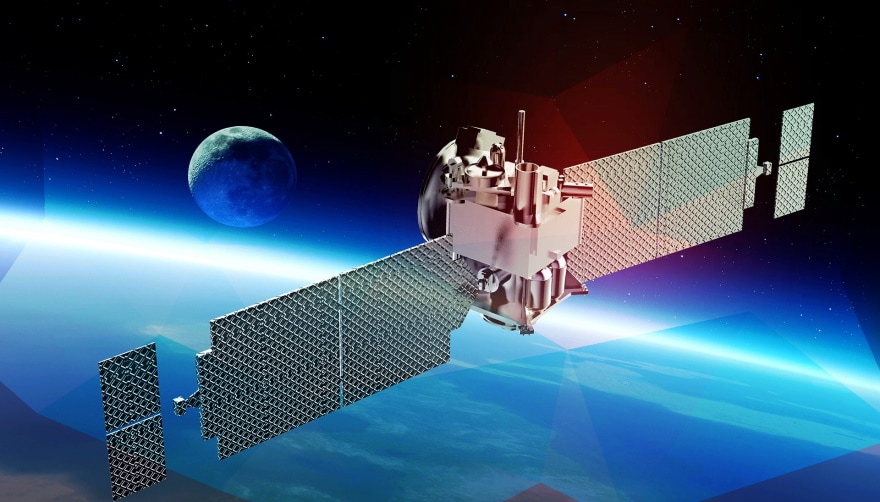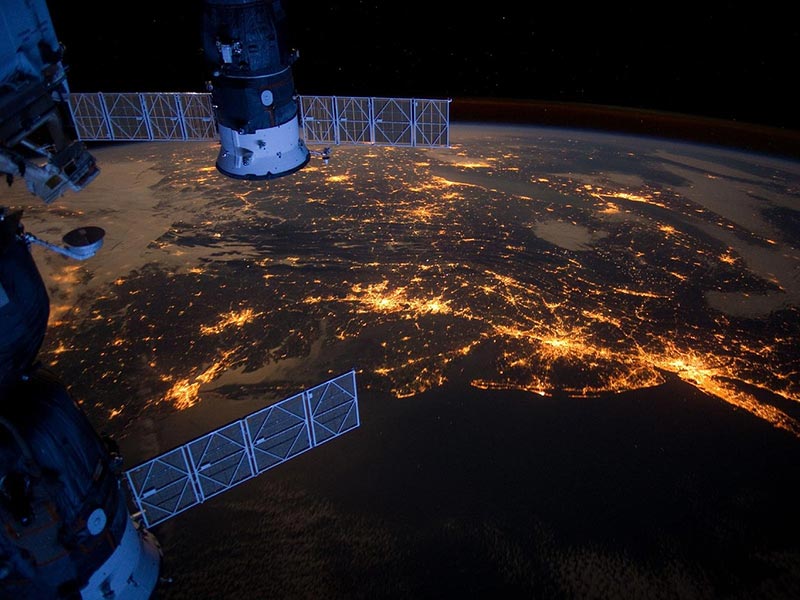How Fast Do Satellites Travel? The Interesting Answer!
Last Updated on

To stay in orbit around the Earth, satellites need to travel at an exact speed. Too fast and they’ll fly out of Earth’s orbit; too slow and they’ll come crashing down because of gravity.
But since satellites travel at different altitudes, this means they also move at different speeds. Moreover, since speed is relative, calculating exact speeds can be an interesting question.
Don’t worry, we break it all down for you here, so the next time that you look up and spot the International Space Station, you’ll know just how fast it’s moving!

How Fast Do Satellites Travel?
It all depends on where the satellite is in orbit. Satellites that are in low Earth orbit, about 250 miles above the surface, need to move much faster than objects higher in orbit.
These are not small differences in distance either. The lowest orbiting objects are “just” 250 miles above the surface. Objects in “geosynchronous” orbit travel about 22,000 miles above the Earth!
This translates to big differences in speed. Objects in low Earth orbit need to travel around 17,500 miles per hour to stay in orbit without succumbing to gravity, while the objects in geosynchronous orbit need to travel closer to 7,000 miles per hour.

Why Do Satellites Travel at Different Speeds?
It all comes down to the speed necessary to combat gravity without exiting Earth’s orbit entirely. The closer that an object gets to Earth, the more that gravity pulls on it. Therefore, an object needs to keep moving faster to avoid falling to the ground.
Think of it this way: A satellite in space is constantly free falling. The only way it avoids crashing into the Earth is that by traveling so fast, it falls into the next space in the orbit. If it slows down, it’ll fall closer to the Earth, even if only slightly. Eventually, that orbit would cause the object to crash into the Earth.
However, if the object is moving too fast, it won’t fall into the right place either. Instead, it’ll fall farther out of Earth’s orbit. This trajectory will eventually take the satellite completely away from Earth.
How Fast Does the International Space Station Move?
The International Space Station orbits the Earth in low Earth orbit, so it travels about 17,500 miles per hour.
It’s also worth noting that since the International Space Station is “only” 250 miles above the Earth’s surface, it’s been quite a while since humans have ventured farther than that into the cosmos.

How Fast Does the Moon Move?
The farthest human-made satellites travel about 22,000 miles above the Earth’s surface, but that’s still only a fraction of the distance of Earth’s natural satellite, the Moon. The Moon is around 238,900 miles away from the Earth on average.
Since the farther an object is from the Earth, the slower it needs to move to stay in Earth’s orbit, it makes sense that the Moon travels significantly slower than any artificial satellites in space.
The Moon moves about 2,300 miles per hour. However, it is worth noting that the Moon isn’t in perfect orbit. In fact, it’s going a little too fast to stay in orbit forever.
The Moon moves 1.48 inches farther away from the Earth each year. It’s not far enough to make a significant difference to the Earth, and it’ll never leave Earth’s orbit entirely, though that’s only because the Sun will transition to a red giant in about 6 to 7 billion years, and it would take about 15 billion years for the Moon to transition out of Earth’s orbit.
Defining Speed
Speed is relative, and for all the calculations here, we used the Earth as a focal point. But the Earth itself is moving, as is the Sun, the Milky Way, and just about everything else in space.
When we change that frame of reference, we drastically change “how fast” something is moving. For instance, the Earth is orbiting around the Sun, and when you break down that speed, it works out to about 66,627 miles per hour.
So, compared to the Sun, all of the Earth’s satellites must travel at least that speed just to keep up with the Earth. But that’s a useless way to look at satellite speed, which is why we used the Earth as our frame of reference here!

Conclusion
Whether it’s GPS, the ISS, or another type of satellite that has your attention, there’s no doubt that it’s moving fast. This all makes for an interesting way to look up at the sky and take note of everything that’s going on!
Featured Image Credit: PIRO4D, Pixabay
About the Author Robert Sparks
Robert’s obsession with all things optical started early in life, when his optician father would bring home prototypes for Robert to play with. Nowadays, Robert is dedicated to helping others find the right optics for their needs. His hobbies include astronomy, astrophysics, and model building. Originally from Newark, NJ, he resides in Santa Fe, New Mexico, where the nighttime skies are filled with glittering stars.
Related Articles:
Can You Use Binoculars to Look At Stars? How to Choose the Right Pair
15 Crucial Facts About Ultraviolet Rays & the Sun
What Constellation Is Spica In? The Interesting Answer!
10 Interesting Leo Constellation Facts, Myths, and FAQs
15 Interesting Pegasus Constellation Facts, Myths, and FAQs
6 Interesting Sagittarius Constellation Facts, Myths, and FAQs in 2024!
What Are Constellations? Where Did They Come From?
8 Interesting Libra Constellation Facts, Myths, and FAQs
